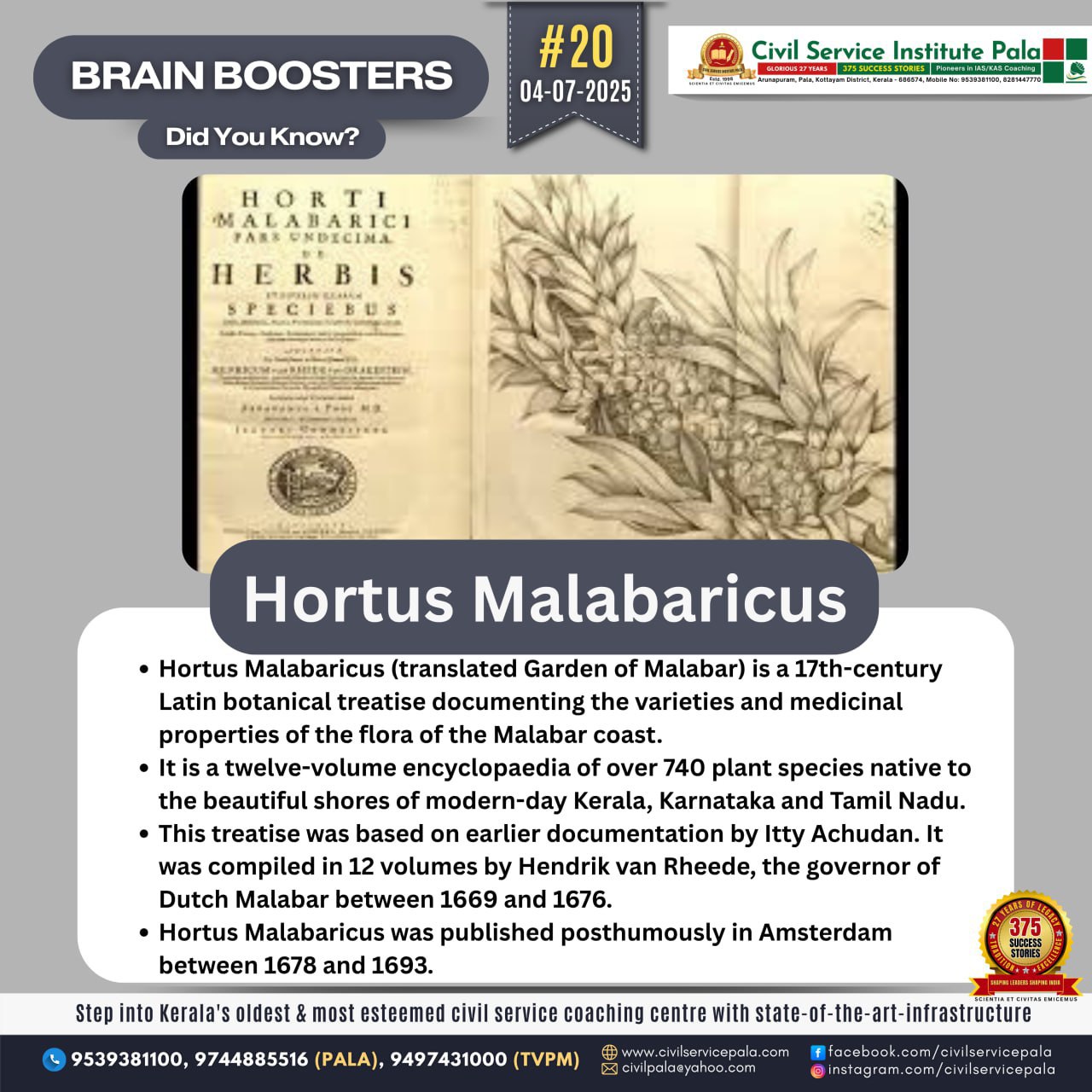Historical Context and Compilation
Hortus Malabaricus was compiled under the patronage of Hendrik van Rheede, the Dutch Governor of Cochin (1663–1677), who aimed to document the medicinal plants used by local healers. The compilation took over 30 years and was published between 1678 and 1693 in Amsterdam.
A unique aspect of the compilation was its collaborative nature. Van Rheede worked with:
Itty Achudan, a renowned traditional healer from Kerala,
Sanskrit and Malayalam scholars,
Catholic priests who could translate local languages to Latin,
and European botanists and physicians.
The indigenous knowledge passed down orally through generations was systematically documented for the first time in a scientific format.
Contents and Importance
The volumes describe over 740 plant species, complete with:
Detailed illustrations,
Local Malayalam names,
Medicinal uses and preparation methods,
Botanical descriptions in Latin.
The plants were mostly from the Western Ghats and coastal Malabar region, an area known for its biodiversity and Ayurvedic traditions.
Legacy and Significance
🌿 1. Preservation of Indigenous Knowledge
Hortus Malabaricus immortalized the vast botanical and medicinal knowledge of Kerala’s traditional practitioners. It is one of the earliest records that valued and preserved oral indigenous wisdom.
🌐 2. Cross-cultural Collaboration
It is a rare historical example of collaboration between Indian scholars and European scientists, at a time when most colonial encounters were extractive in nature.
📚 3. Scientific and Historical Value
The text serves as a botanical encyclopedia and a historical record of how plants were classified, used, and understood in the 17th century. Its botanical illustrations are still considered valuable for taxonomic research.
🔬 4. Relevance to Modern Medicine and Botany
Many of the plants described in Hortus Malabaricus are being re-evaluated today for their pharmacological properties, contributing to modern herbal medicine and pharmacognosy.
🗣 5. Linguistic Heritage
The work also played a role in the study of Malayalam language and script, as it was one of the first major European publications to record and transliterate native Indian languages.
Modern Recognition
Today, Hortus Malabaricus is considered a cultural treasure. The Government of Kerala has supported reprints and Malayalam translations. Statues and commemorative events honor contributors like Itty Achudan, recognizing their unsung role in preserving India’s traditional botanical wealth.




